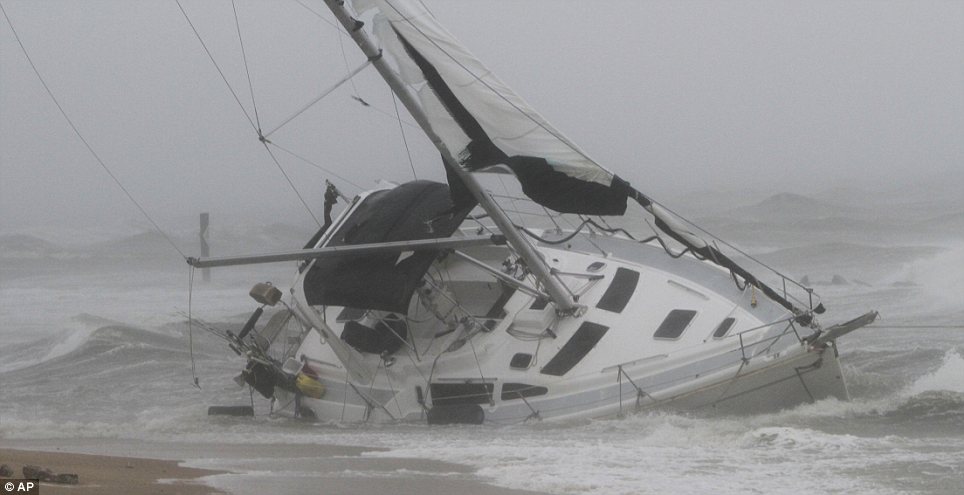Keeping your boat in the water? Give your boat the best chance at survival with our hurricane preparation tips. If you found these to be helpful please like and share with your friends. If there are any tips you stand by feel free to comment on our Facebook post!
- Insurance
- Check with your insurance company and review hurricane plans to ensure that your boat will be covered if it remains where it is. Make sure that you fulfill all that is required. It is always important to remember not to risk your life for your boat. Your boat is a thing which can be replaced.
- Remove Sails
- It may be a pain to take your sails off the boat. Especially if you have in-mast furling. It is worth the time it takes to remove the sail in the case of a hurricane. Leaving just a little bit of the main sticking out of the mast can cause mayhem when it comes to hurricane force winds. 6 inches becomes a foot and next thing you know your boat is “sailing” side to side and can become a potential threat to itself, docks and other boats around it. Cleats have been known to rip free from the deck due to genoa sheets and other lines after sails have been forced free. Not to mention the damage that could be caused to the sail itself. It’s always better to play it safe and just take the sails off the boat.

Source: Sailing Totem
- It may be a pain to take your sails off the boat. Especially if you have in-mast furling. It is worth the time it takes to remove the sail in the case of a hurricane. Leaving just a little bit of the main sticking out of the mast can cause mayhem when it comes to hurricane force winds. 6 inches becomes a foot and next thing you know your boat is “sailing” side to side and can become a potential threat to itself, docks and other boats around it. Cleats have been known to rip free from the deck due to genoa sheets and other lines after sails have been forced free. Not to mention the damage that could be caused to the sail itself. It’s always better to play it safe and just take the sails off the boat.
- Strip Boat
- Remove anything on the boat that could either be damaged, cause damage or increase windage. This includes things like dinghies, dodgers and bimini’s to MOB devices, grills, decorations, covers, lights and flags. Immobilizing or even removing the boom is also something that should be considered.
- Batten Down The Hatches
- Check windows, ports, hatches and companion ways for potential leaks. Replace worn seals if needed.
- Seacocks
- Close all seacocks besides ones needed for the bilge pumps and engine.
- Check Lines
- Since you will be using lines to secure your boat and things on it you will want to do a thorough check. Check all lines for wear and consider replacing them. Also check that dock lines or mooring lines are an appropriate width and have stretch to them. Throwing a few more lines and fenders on than usual is never a bad idea. Also, if you are in a slip consider tying off to pilings or piers in addition to finger piers or docks you usually tie up to. Consider what might happen if a dock breaks loose. Keep in mind tide surge.
- Inspect Mooring and Docks
- Thoroughly check your mooring and if you have any doubts get it inspected by a professional. Check docks and make sure that they are in good shape and that cleats and tie off points are secured well.
- Chafing Guards
- Carolyn Shearlock, who wrote and article for Cruising World describes how fire hoses make great chafe guards. The following is some advise she gave on how to use them. “Fire hose is the chafe gear of choice. Fire departments are required to periodically replace hoses and generally give the old hose away for free if you ask. Cut pieces about 10 inches long. Make a small hole about an inch from one end, pass the line through the hose and then use a piece of light line through the hole you made to tie the fire hose to the cleat, stanchion or dock. Don’t tie the chafe gear to the line, despite what many books say. If you tie it to the line, it will not stay in the right place as the line stretches during the storm.”
- Shut Down
- if possible disconnect from shore power. Turn off refrigerators and other unnecessary items that use battery power. If you have solar panels on board you may want to consider leaving them. The solar panels can help charge batteries and keep your bilge pumps running. This is important if you might not be to get to your boat in a timely matter after the hurricane. It is important to secure the solar panels and consider the chance that they may not make it through the storm.
:max_bytes(150000):strip_icc()/sailboats-on-shoreline-hurricane-irma-downtown-cruz-bay--st-john-903317024-5b7b8f49c9e77c0050eb095e.jpg)
Source: TripSavvy
- if possible disconnect from shore power. Turn off refrigerators and other unnecessary items that use battery power. If you have solar panels on board you may want to consider leaving them. The solar panels can help charge batteries and keep your bilge pumps running. This is important if you might not be to get to your boat in a timely matter after the hurricane. It is important to secure the solar panels and consider the chance that they may not make it through the storm.
- Your boat is only as safe as the others around it
- Offer help to your neighbors. An unprepared boat can break free and cause damage to a mooring field or marina full of boats.
- Locking Your Boat
- You should consider the pros and cons of leaving your boat locked or unlocked and taking your keys or leaving them on the boat.
- TAKE PICTURES
- It is important that you take detailed pictures of the steps you took to protect your boat. These can be valuable if you have to make a claim with your insurance company.
You can keep in touch with Bluenose Yacht Sales by connecting with us on
Facebook https://www.facebook.com/BluenoseYachts/ (Like our page to receive updates!)
Twitter https://twitter.com/BluenoseYachts
Instagram https://www.instagram.com/bluenoseyachts/
Pinterest https://www.pinterest.com/bluenoseyachts/
Bluenose Yacht Sales home page https://www.bluenoseyachts.com/
Featured Image Source: Daily Mail








